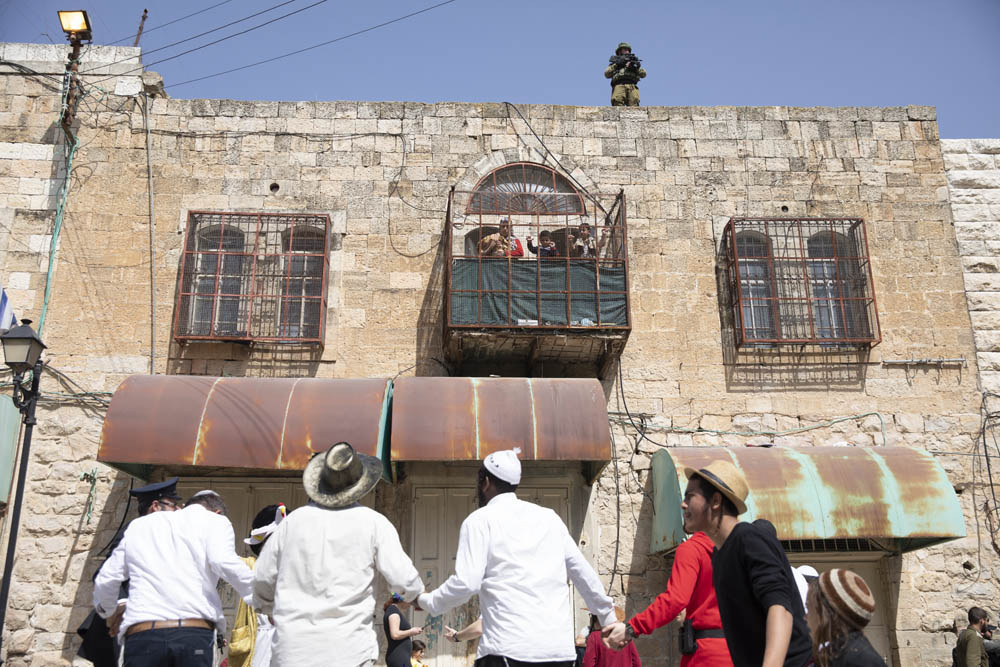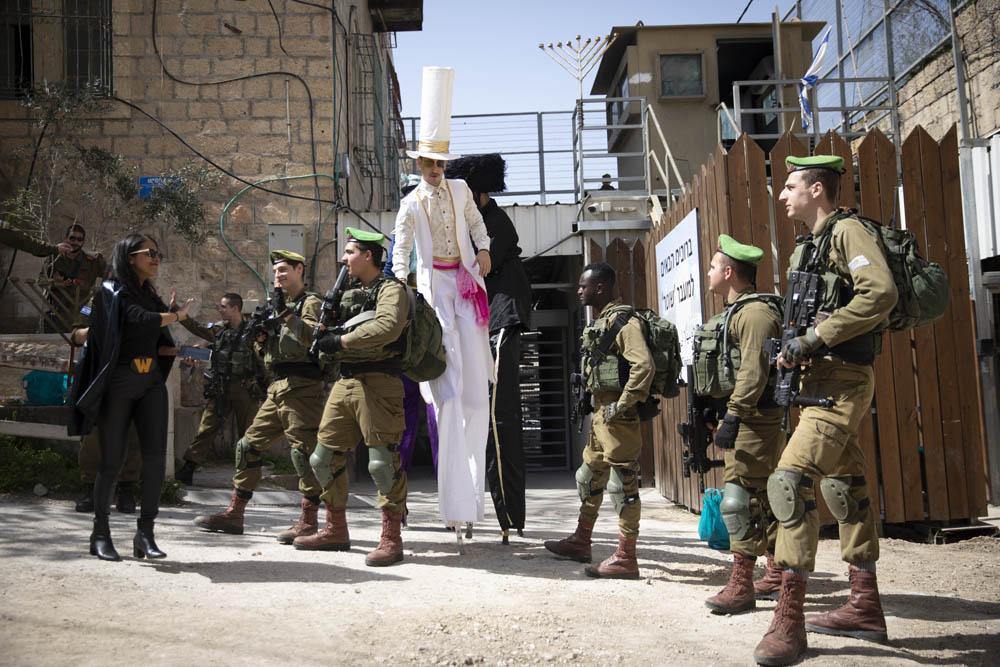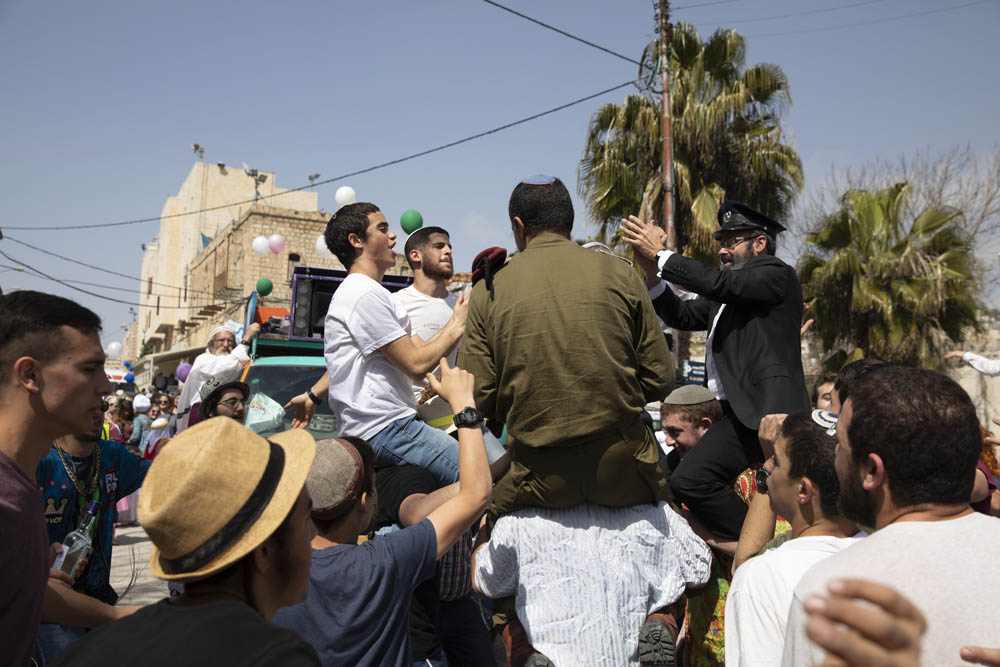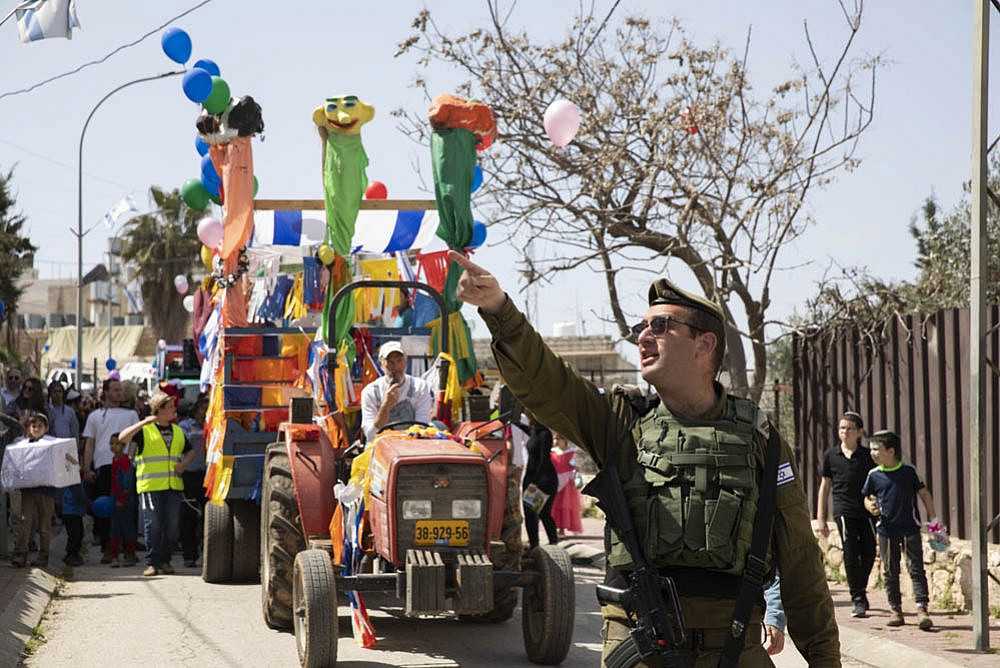In the shadow of the spread of coronavirus across Israel-Palestine, over 250 Israeli settlers took part in the annual parade to celebrate the Jewish holiday of Purim in the center of occupied Hebron on Tuesday.
The settlers, who marched from the neighborhood of Tel Rumeida to the Tomb of the Patriarchs, were accompanied by hundreds of Israeli soldiers and police officers who prevented Palestinian onlookers from approaching.
The settlers boasted that theirs was the only Purim festival that was allowed to take place, after parties in cities across the country were cancelled due to fears of the virus; however, attendance was sparser than in previous years.
Meanwhile, just 22 kilometers north, the Israeli army put Bethlehem under lockdown after seven cases of COVID-19 were discovered in the city, preventing residents from entering or exiting the city.
Tuesday’s parade began at the “Elor Junction,” where Israeli soldier Elor Azaria shot dead a wounded Palestinian assailant as he lay incapacitated on the ground in Mar. 2016. Imad Abu Shamsiya, a Palestinian from Hebron, was standing just a few meters away, filming the incident. His documentation led to an investigation and eventual trial of Azaria.

Just before 11 a.m., a group of young settlers who appeared drunk knocked on the door of a Palestinian family that lives next to the Abu Shamsiya family. When an Israeli soldier tried to remove them, one of the settlers responded by saying “Let us enjoy Purim a little.” When the settler saw Abu Shamsiya in the adjacent house, he told his friend that they had the wrong address.
“I just hope the event ends peacefully,” Abu Shamsiya said quietly.
Since 1967, Hebron’s city center has become the site of several Jewish settlements that Israel established amidst the local Palestinian population. For years, the Palestinians living in the area have been subjected both to extreme restrictions imposed by the military and to routine violence by extremist settlers. As a result, huge numbers of residents moved out and hundreds of businesses were shut down, leaving the area in economic ruin.

Around 34,000 Palestinians and 700 settlers currently live in the city center. Palestinians living there are subjected to restrictions on their movement, including the closure of main streets, while settlers are free to travel where they wish. In addition, the Israeli army has issued orders to shut down hundreds of stores and commercial establishments in the area.
“Although we’ve had tourists from all kinds of places, the coronavirus did not make it to Hebron,” said Baruch Marzel, a prominent extreme-right activist and resident of the city who wore a “Make Hebron Great Again” hat to the parade. “Hebron is a strong and holy city for the Jews where our ancestors protect us, while in Bethlehem, which is holy to Christianity, corona is having a field day,” Marzel added.

The marchers, many of them teenagers carrying bottles of wine, walked past Palestinian shops that closed 25 years ago following the Cave of the Patriarchs massacre, in which settler Baruch Goldstein murdered 29 Palestinian worshipers in February 1994. In response to the killings, the Israeli army began restricting the movement of Hebron’s Palestinian residents and enforcing a policy of strict segregation between them and the settlers.
Two decades later, the restrictions have only grown more severe. Hebron’s Shuhada Street, where much of Tuesday’s march took place, has seen the most notorious of these restrictions. Once a busy commercial center, many shop doors have now been welded shut by military order, giving the area the appearance of a ghost town. Today, many of the shuttered shops have been spray-painted with Stars of David.

During Purim, the existing restrictions on Palestinians become even more extreme. Palestinians living along the route of the march are not even allowed to open the doors of their homes, while some watch the march through the metal bars installed on their balconies to protect them from stones thrown by the settlers.
Israeli soldiers can also be seen dancing with settlers, and the few makeshift checkpoints through which Palestinians can enter Shuhada Street with special permission are shut down. The loud music, the dancing, and the colorful costumes stand out even more against the backdrop of the ghost town, the shop doors covered in Hebrew graffiti.
A version of this article was first published in Hebrew on Local Call. Read it here.


